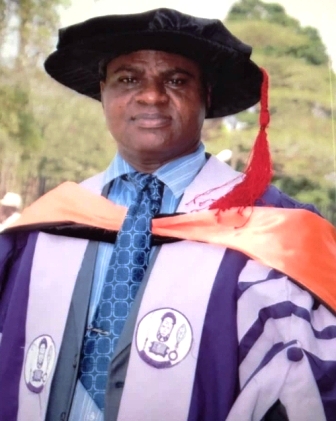Course Structure T ih s cou sr e ni ort ecud s co pecn ts, i ss eu ,s t hce n qi ues dna p or ec sses dedeen rof c mo elp ting dna m ana g ni g
ni mrof ation t nhce ol go y p or cej t. To cip s lcni u ed : ih rots y, tr dne s, dna the hum na im cap t fo ni mrof ation t hce nol go y;
p or cej t m ana gem ne t t oo l ,s t hce n qi ues dna co pecn ts. T ae m w ro k, t ae m bu nidli g method ,s ro la dna wri tt ne
c mmo acinu tion is em ahp siz de .
Course Structure Learningoutcomes
Uponcompletionofthiscourse,students shouldbeableto:(i)explain the different modes of data
communication, synchronization, channel and media, and modulation; (ii) discuss the basic principles
and concepts of network; (iii)describeteleconferencing and the internet; (iv) have a thorough knowledge
of internet communication software; and (v) create disk images, recover deleted files and extracthidden
information; (vi) identify the various communication protocols
CourseContents
Data Communication: Simplex, Half Duplex, Full Duplex, Synchronization, channels and media,
Modulation, Networks, Protocols, Switching, Techniques and Transfer modes, mobile communications,
Teleconferencing, Voice Mail and Facsimile. Description of the Internet, Intranets and Extranet and
relationships, Internet websites, Domains and www (Site name, Points of Presence, Line Capacity, Site
Maintenance etc). Communication protocols, Internet communication softwares.
Course Structure In ort ud tc i no ot e iht cs. byC ers ap ce and ht e fou htr indus rt ial r ve olu .noit ICT and e iht cs. byC er ep ace.
Au omonot su weap no s and e ciht s. ICT E ht ical I ss eu s ( iD g ti al Divide, cybercr mi e, unemployme ,tn piracy ot
human rig th s p or blem), eS rc et es rvices and e iht cs. eR la noit s ih p eb t ew en e ciht s and ICT. E ht ics and harms ot
privacy. ICT resource all co a noit and transparency disc ol sure. Inte ll e tc au l prope tr y and its rela noit ship ot ICT.
A cc uracy of informati no ( ua ht e itn c ti y, fi ed til y, a cc uracy of ht e informati ,no c mo pensa noit for ht e injured).
A cc essibi til y of inf mro a .noit E ht ics of whis lt e b ol wing. E ht ics of c no fide itn ality. The tr da e-off eb t ew en privacy
and es curity. E ht ical best pra tc ices in ICT. ICT prof se s noi a 'ls obliga noit ot ht e up bli .c C nommo e iht cal
hc allenges ot ICT prof se s noi als. Plagiaris .m byC er law. oG ev nr a cn e and e iht cs. oV lu tn ary av lues and le ag ll y
b ni d ni g on rms, i tn ernati no al c no ve noitn s.
Course Structure Introduction to computer network, Data Communication requirements and evolution of computer
networks, Network Topologies (LAN, WAN, MAN). AN Architectures Star. Bus/Tree topology.
Ring topology. Ethernet CSMA/CD/CA. IBM Token Ring, Network Protocols. OSI Model
TCP/IP model. Data Communication. Transmission mode. Simplex, Half-duplex. Full-duplex.
Bluetooth. WiFi, WiMax. Serial and parallel transmission. Synchronous transmission vs
Asynchronous transmission. Transmission Media and Transmission Technologies, Metallic media
. Optical fiber media. Wireless media (line-of-sight media). Wireless media (Baseband and
broadband transmission. Transmission bandwidth (link capacity). Modulation and demodulation.
modems and modem standards. Transmission impairments (distortion/noise limitations on system
performance). Data Encoding Techniques. Unipolar, Polar. Bipolar. PAM. PCM. Multiplexing
FDM, TDM, DWDM etc. Frequency Division Multiplexing. Synchronous Time Division
Multiplexing. Digital Carrier Systems. Network structure: Routing in switched networks. LAN
overview. Circuit Switching Concepts. Packet Switching Concepts. Cables. Modems. Routers.
Hubs. Switches. Access Points Internet Protocols architecture. OSI Model. TCP/IP Protocol
Architecture. IP Addressing, OSI vs TCP/IP ? TCP/IP vs UDP ? IP V4 Classful addressing ?
Designing Subnets ? Introduction to IPv6 ? Subnetting ? Classless Addressing CIDR, Data Link
Control Protocols. Stop and Wait Flow Control, Sliding Window Flow Control, Stop and Wait
ARQ. Go Back N ARQ. Selective Reject ARQ. HDLC Network Security. Confidentiality with
Conventional Encryption, Message Authentication and Hash Functions. Public-Key Encryption
and Digital Signatures
Course Structure Introduction to ICT Revolution, ICT, Globalization, ICT Revolution & Education, Cyber
Liberalization, Economy in Computer Revolution & Cyber Corporation, Theories of Communities
and Technologies, Theoretical foundations of ICTs and communities, Public sphere and the
communities, Social capital and communities, Communication infrastructure and communities,
Physical and Virtual communities, Community computer networks and Community technology
centers, Imagined and Virtual communities, Rural and urban communities: The Digital Divide and
Inequality, Nonprofit and social movement communities, Civic engagement and community
development, Ethnic transnational and global committees
Course Structure Data Preliminaries. Sampling Designs. Counting. Probability and Probability Distributions.
Sampling Distributions. Estimation and Hypothesis Testing. Scatter Diagram. ANOVA and Chisquare. Imputation Techniques. Data Cleaning. Correlation and Regression. Manipulating Data.
Visualizing Data. Basic Descriptive Statistics. Relationship between two variables. Data Analytics
Overview. Importance of Data Analytics. Types of Data Analytics. Descriptive Analytics.
Diagnostic Analytics. Predictive Analytics. Prescriptive Analytics., Benefits of Data Analytics.
Data Visualization for Decision Making. Data Types. Measure Of central tendency. Measures of
Dispersion. Graphical Techniques. Skewness & Kurtosis. Box Plot. Descriptive Stats. Sampling
Funnel. Sampling Variation. Central Limit Theorem. Confidence interval



